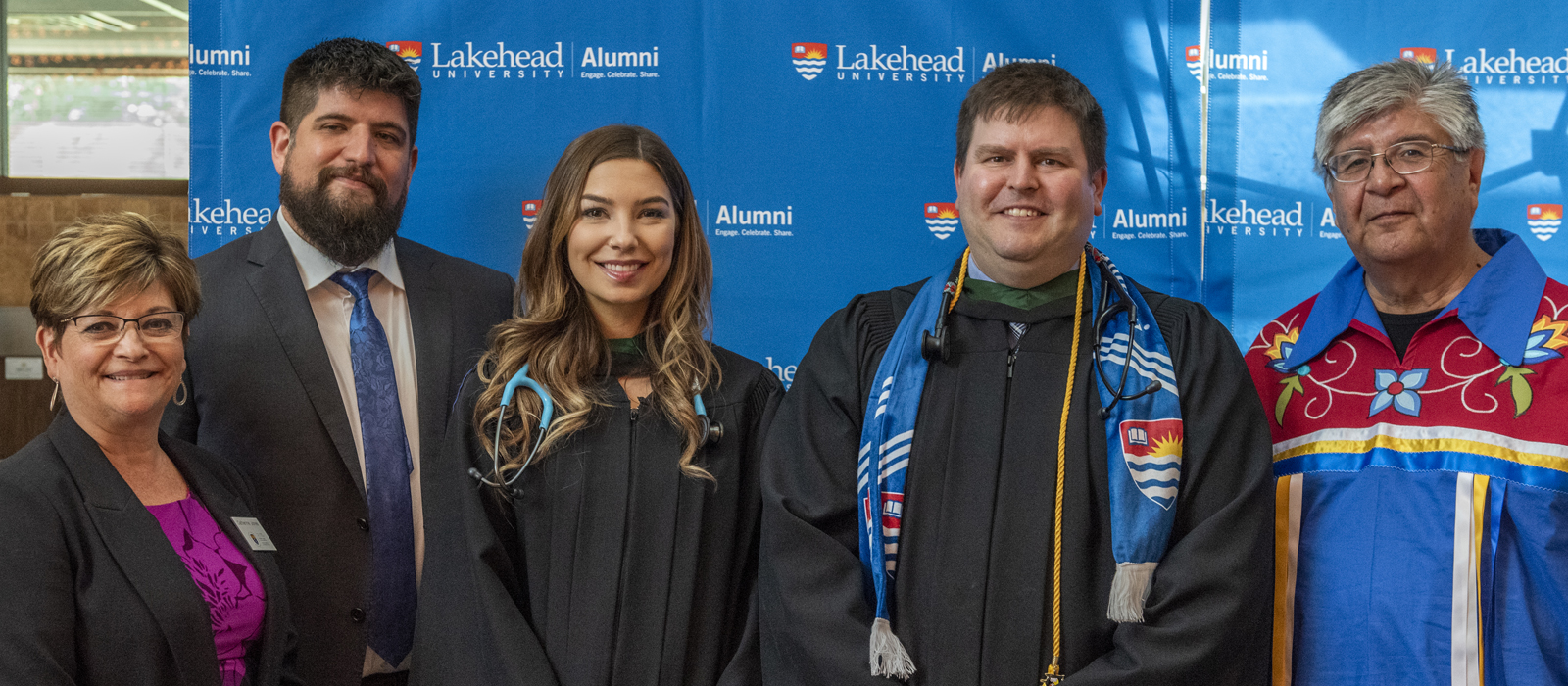NOSM staff build critical relationships

Sam Senecal supports First Nation partner communities who provide experiential learning opportunities to NOSM medical students. It’s a fundamental, integral part of medical education at the Northern Ontario School of Medicine. Sam continues to be a critical, highly valued community liaison since the School’s inception—it’s a complex job that he’s been at for 16 years.
“There’s inherent risk in sending medical students to remote and fly-in First Nations communities. For most of the students, it’s the first time in their lives that they’ve been on-reserve. But I was all-in since day one. I saw the opportunity, there’s so much potential here,” says Sam, Community Coordinator at NOSM.
Reciprocity and responsibility are the focus. Northern Ontario’s remote First Nations communities are steadfast supporters of the School since its inception. Even before the first MD class was welcomed in 2005, NOSM committed to improving the health of all peoples and communities of Northern Ontario. In its earliest stages of the School’s development, NOSM engaged Indigenous communities as part of its mandate to be socially accountable to the region it serves. NOSM depends on the experience of community leaders to improve education for all learners and to move the School forward.

Indigenous graduates
Many communities who partner with the School still do not have access to a full-time family physician. There is no straight-forward solution. It’s been identified as an ongoing long-term challenge. “When I speak with communities, I’m very up front about it. I know NOSM is going to see an immediate return on their partnership—the students come back more culturally and socially aware of what’s really going on in communities,” says Sam. “However, the benefit to communities is less immediate. It is going to take time and we’re making slow and steady progress. So far, NOSM has graduated more than 50 Indigenous doctors.”
For Sam, the dream is to see a NOSM graduate from each of the 42 communities who partner with NOSM, but he says that’s going to take time. Sam highlights other benefits, including the lasting relationships between students and community members, and community youth who have been encouraged and inspired by visiting medical students to consider pursuing a career in the health professions.
Sam says culture at the School is key, especially among peers of learners. It comes down to mutual respect and a true understanding of the inequities others face. “I’m so proud of our students. They’ve overcome a lot of barriers to get where they are. There are so many misnomers that others don’t understand. It means other people can face those same barriers with success.”
“Addressing the imbalance of power at the highest levels, passing risk, hearing our voices, and, putting an end to the quieter, harder to pin-point racist behaviours, that’s the challenge. It’s important to realize that our people are like a rainbow. You could be talking to an Indigenous person and they could be fair skinned and you wouldn’t even know it. How do we empower our students to speak up? Not just Indigenous students, but all students.”
Sam Senecal
